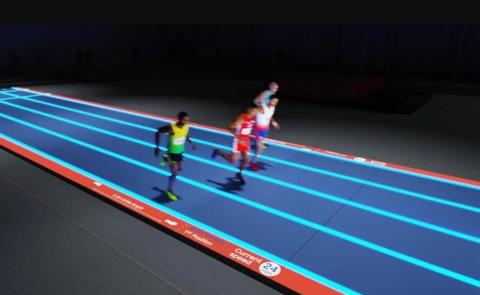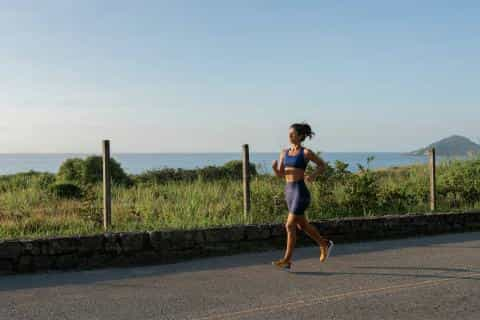
For decades, the evolution of track surfaces has been incremental at best. From cinder tracks to rubberized surfaces, improvements have been minor—until now. A revolutionary development by UK-based technology company Feldspar is poised to redefine the very foundation of sprinting and athletics.
Feldspar has introduced the world’s first sensor-enabled, high-performance running track, promising not just increased speed but also unprecedented insights into human performance. With the completion of its first functional prototype, the company aims to set a new standard for sprinting surfaces, potentially ushering in the next era of record-breaking performances.
The track’s design incorporates cutting-edge materials engineered to optimize energy return. By reducing surface energy loss and enhancing traction, the new track minimizes inefficiencies in an athlete’s stride, creating conditions that could push human speed limits even further.

What sets this track apart is its built-in sensor technology, which continuously monitors footstrike patterns, force application, and energy transfer. This real-time data allows coaches and athletes to analyze performance with unparalleled precision, making training regimens more efficient and targeted.
“We’re not just creating a faster track—we’re creating a smarter track,” says a spokesperson from Feldspar. “With real-time analytics, athletes will gain deeper insights into their biomechanics, leading to optimized training strategies.”
While still in its testing phase, this groundbreaking track surface is expected to be introduced in select competitions leading up to the 2028 Olympic Games in Los Angeles. If proven successful, it could become the standard for elite-level athletics, offering the most advanced sprinting surface ever seen in the sport.
World Athletics has yet to formally approve the use of this technology in major championships, but early testing suggests that the track meets regulatory requirements while providing a significant performance advantage.

With improved energy return and reduced track friction, some experts believe this innovation could help push the boundaries of human sprinting. Could it be the key to seeing the first-ever sub-9 second 100m dash? While it’s impossible to predict with certainty, one thing is clear: the evolution of track surfaces is no longer incremental—it’s revolutionary.
Discover More Content





